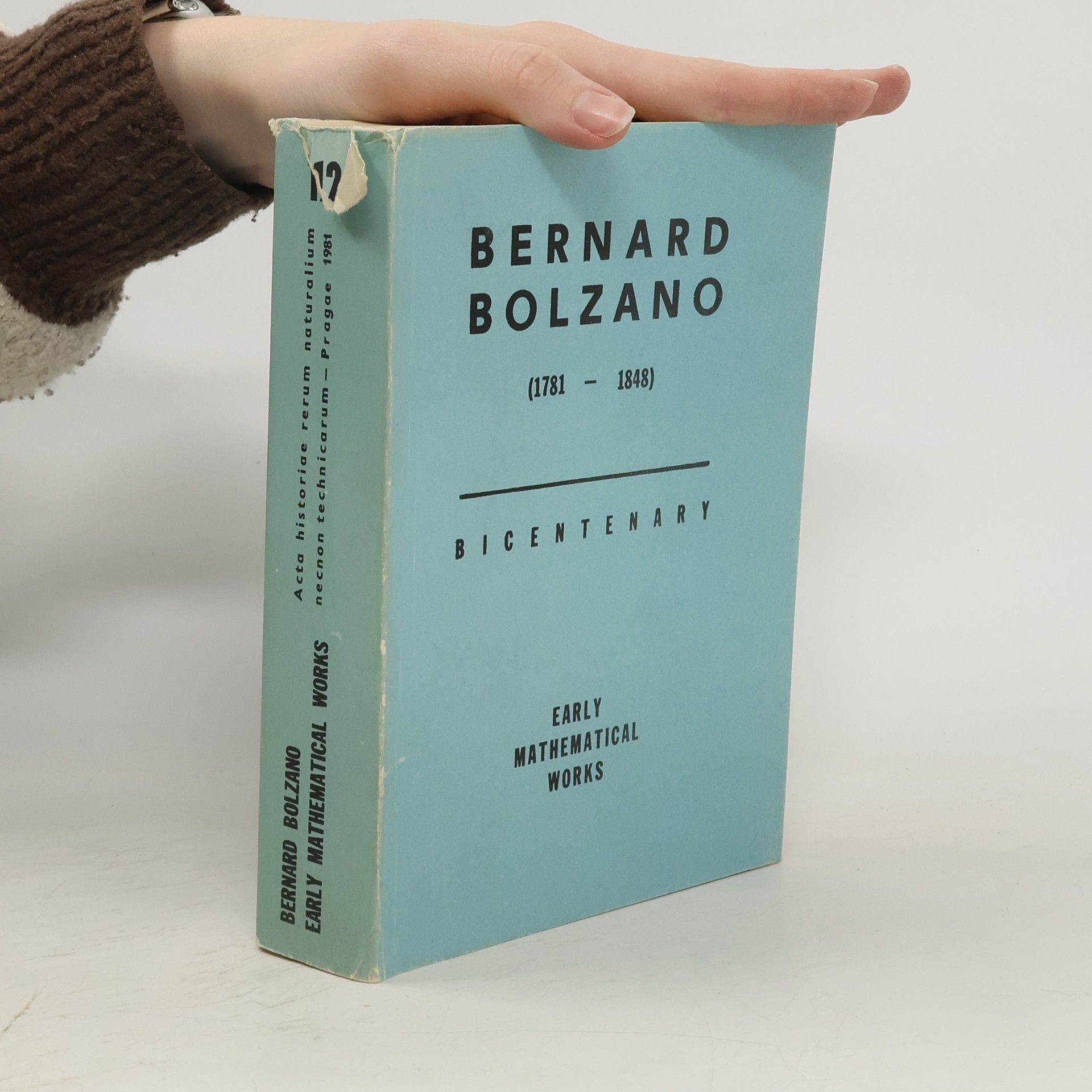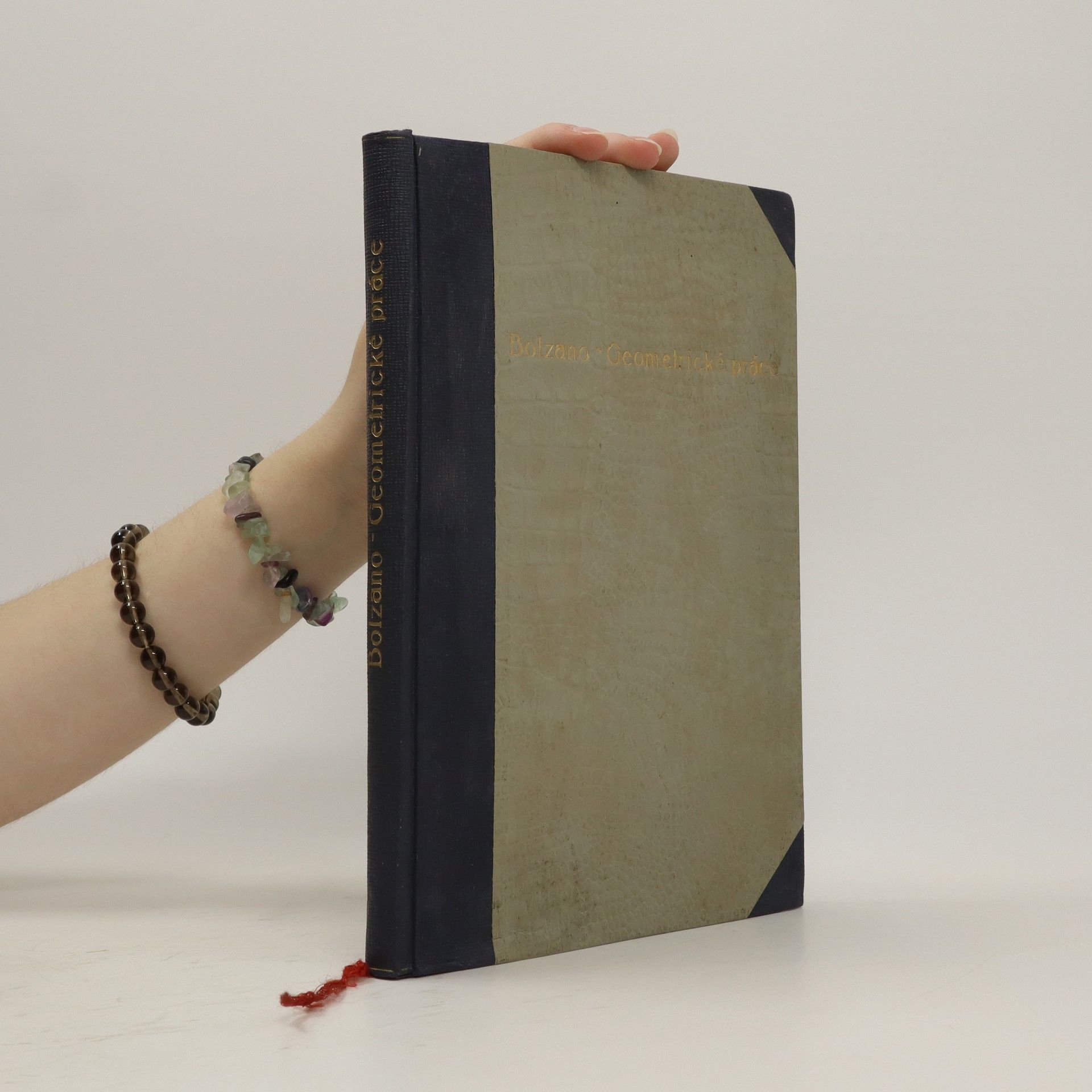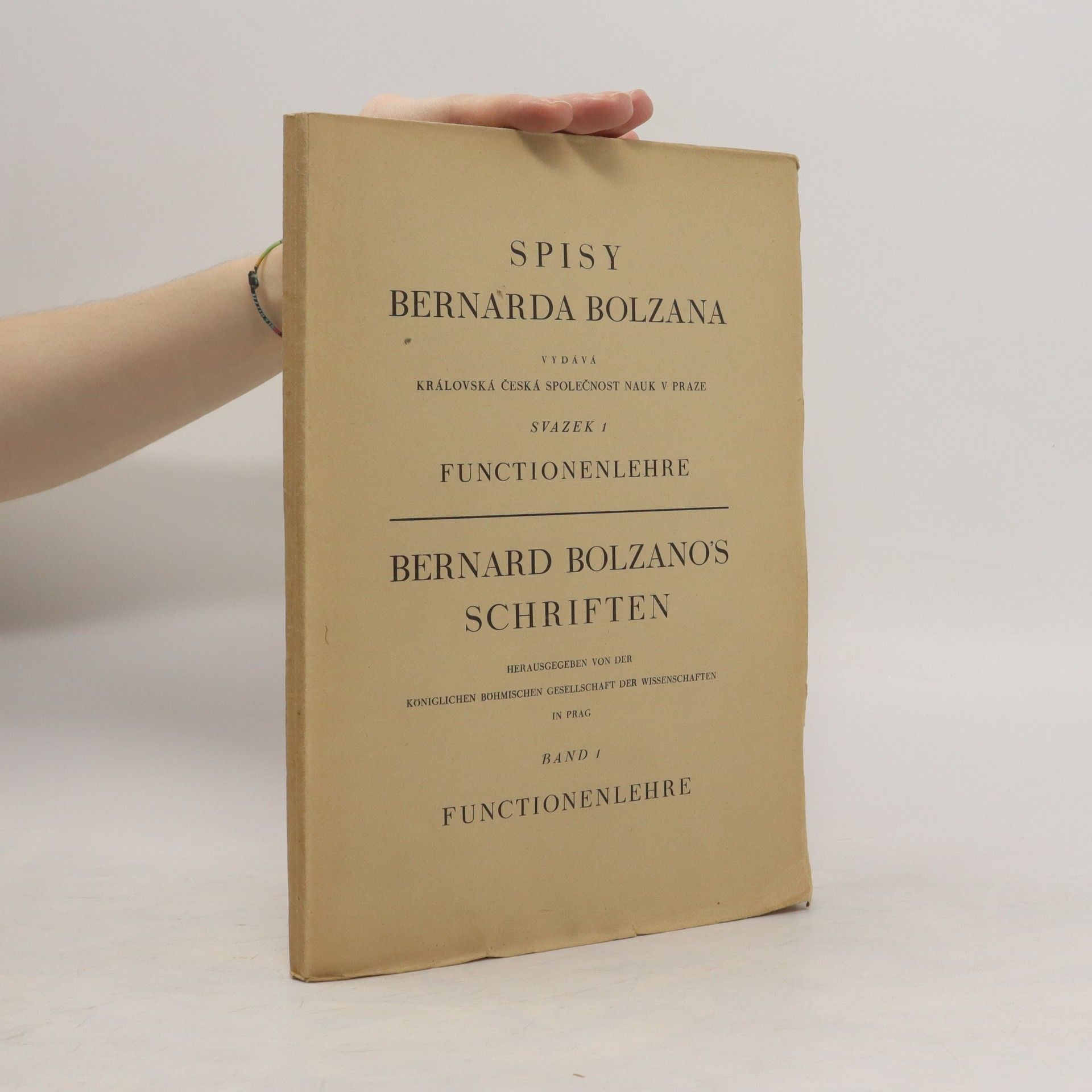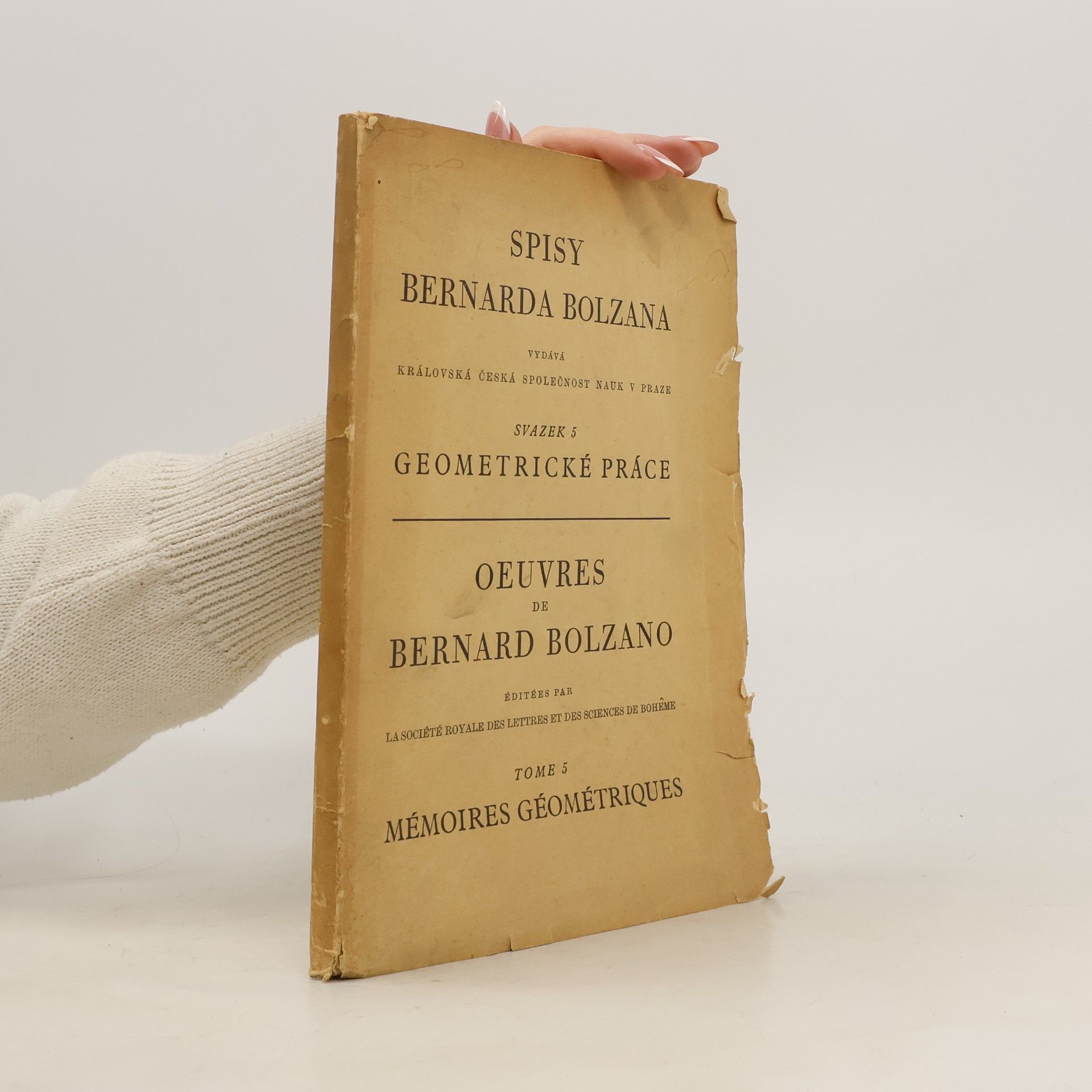Spisy Bernarda Bolzana 5. Oeuvres de Bernard Bolzano 5
Geometrické práce. Mémoires géométriques







Geometrické práce. Mémoires géométriques
Bernard Bolzano's (1781-1848) writings in aesthetics are clear, concise, and explicit about method. Provocative and revisionary, they champion broad views of beauty, the arts, and their social function. Dominic McIver Lopes's introductory materials place Bolzano's essays in context, give them a new interpretation, and map out how to teach them, in full or in part, in a variety of courses.
Kázání "O dobročinnosti" osvíceného a pokrokového kněze, matematika, filosofa a sociálního myslitele prvé poloviny 19. stol. hodnotí.
Náš výbor chce zprostředkovat dnešním českým čtenářům myšlenkový odkaz velkého osvícenského učence a kazatele. Překlad se snaží uchovávat ráz svébytného řečnického projevu z první čtvrtiny 19. století, určeného tehdy hlavně studující mládeži, v té míře, aby byl sdělný pro současného čtenáře. I vzhledem k tomu volíme u citací biblických pasáží ekumenické vydání (Praha 1991). Na několika místech, kde naše textová předloha Bibli necituje, ale k biblickému textu explicitně odkazuje, jsme citaci do našeho vydání doplnili.
Překlad části obšírného úvodu matematického spisu Grossenlehre, v níž Bolzano přehledně vymezuje základní pojmy své koncepce logiky, jak ji dříve rozvinul především ve svém logickém spise Wissenschaftslehre. Současně zde Bolzano podává návod metodického postupu, jakým má být vedena výuka a výklad vědy, především matematiky, a přichází s požadavkem důsledně exaktní výstavby celého výkladu zahrnující i definice základních pojmů a důkazy výchozích tvrzení. Přeložila a úvodní studii napsala Marta Vlasáková.
Spis kněze a filosofa Bernarda Bolzana (1781–1848) pochází z roku 1827 a hledá odpověď na onu zásádní otázku, kterou si dle autora klade každý moudrý člověk: Bude náš život pokračovat i po smrti, a v jaké podobě? Osvícenecký objektivista a realista je přesvědčen, že duše je vskutku nesmrtelná, a dílo samotné je pokusem o co možná nejpřesvědčivější představení důvodů k této víře. Bůh, člověk, jeho lidská duše a také příroda jsou pro Bolzana nepochybné skutečnosti. Konzolační spis má kořeny ve slavném Boethiově díle Útěcha z filosofie a rovněž navazuje na úvahy o nesmrtelnosti v Platónově dialogu Faidón.